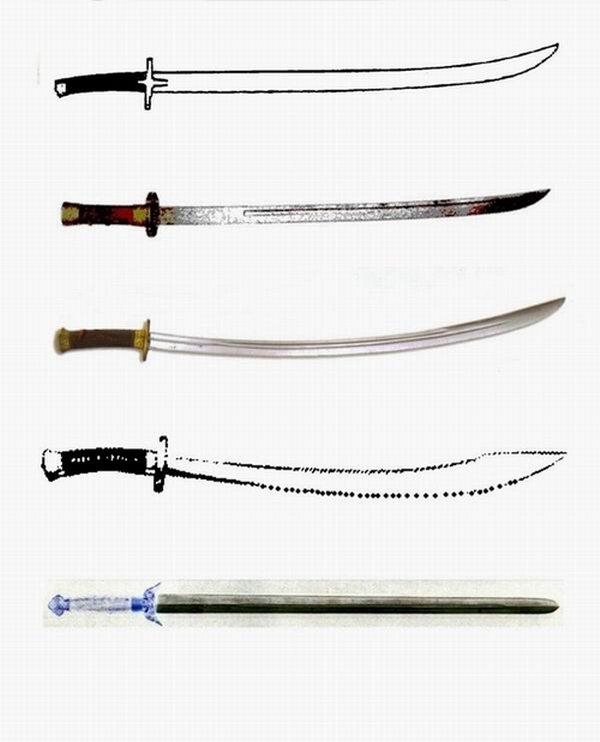Above and Below: Blade Profiles

From TOP to BOTTOM:
1) Typical Turko-Mongol saber of the Yuan Dynasty (1279-1368). The ancestor of the goosequill and willow leaf sabers of later dynasties. The goosequill saber and willow leaf saber were to be used by the military and civilians alike.
2) Goosequill saber (yanmaodao) of the Ming and middle Qing Dynasties (1368-1800?). The blade is straight until the curve begins around the centre of percussion. The center of percussion is the point on the blade with the least vibration on hard contact, the spot on the blade that transmits the most power to the target in a hard chop. This type of sword seems to have lost its popularity by the end of the 18th century.
3) Willow leaf saber (liuyedao) of the Ming and Qing Dynasties (1368-1911). It is characterised by the blade having a gentle curve throughout its length. The steepness of the curve increases as it moves towards the tip.
4) Oxtail saber (niuweidao). It originated in the late Qing Dynasty and was used exclusively by civilians and not by the Qing military. Commonly known today as " the Chinese Broadsword ".
5) The typical jian of the Ming and Qing Dynasties (1368-1911), commonly used by civilians.
______________________________________________________
Click here to view my Chronology Table on 2500 years of Chinese sword technical development
http://chineseswords.freewebspace.com/about.html